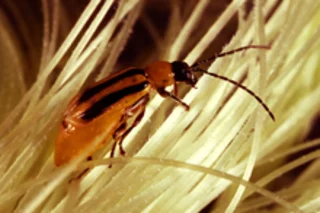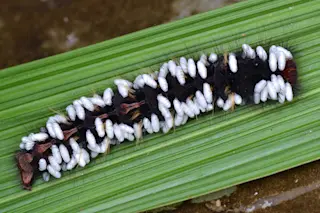Scientists have created genetically engineered corn plants that resist a root-destroying larvae by emitting a chemical call for help, summoning a parasite that preys on the larvae. The larvae of the
western corn rootworm (actually a beetle) is considered the most destructive corn pest in the United States and plagues parts of Europe as well. Known as the billion-dollar bug, the rootworm is said to be responsible for crop damage and pest-control spending valued at more than nine figures [National Geographic News].
To fight the larvae without the use of synthetic pesticides, researchers created corn plants that release a chemical compound into the soil, which calls forth parasitic nematodes to come and infest the beetle larvae. In the study, published in the Proceedings of the National Academy of Sciences, researchers describe a field experiment in which they
interspersed transgenic and normal maize plants, and infested the plots with rootworm before ...














